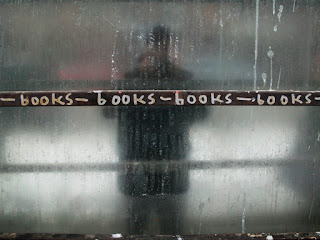Le Capteur: presented at La Maison de la culture
in Longueuil, Québec
From September 28 to December 9
Édifice Marcel-Robidas
300, rue Saint-Charles
Ouest, Longueuil
Photographs by Bertrand Carrière
Curated by Mona Hakim
In 2006 I began work on a
project called Le Capteur, a photographic journal comprising an open-ended
series of books in which images from different parts of my production both collide
and coexist. In eliminating the
usual thematic barriers present in most photographic projects, this journal
offers a collection of markers that suggest improbable literal or temporal encounters
between the images.
The project title is derived from the French word for a
digital camera’s sensor (capteur), but it is also a reference to the word “capteur”
as the person, the photographer, who “captures” the image. And it alludes to
French director Alain Cavalier’s video journal, which he kept for more than 10
years, and which found its public form as the film “Le Filmeur.”
Using recurring motifs and signs,
I construct a personal territory, an atlas of sorts, where the strange meets
the ordinary. The diary format allows for the exploration of the visual limits
of personal experience, and the recording and shaping of narrative along the
way.
This project also acts as a chronicle of my adventures in the digital
world. I basically work as an amateur, using a small “point and shoot” camera
because it is simple, unobtrusive, and mostly because it responds to my intuitive
way of working. This automatic practice of photographing daily has become my
working theory, a way of engaging with the visual flow of everyday activities
and their ceaseless transformation.
Every month, the memory cards are
cleared in order to begin building a new chapter in this seemingly endless
project. Then, using an on-line design programme, a book is made. Although
there is a part of the project that is presented on the wall, it is the books that
are at its core. They have come to represent the ultimate form in which the
photographs come alive and interact.
...
I have always believed that any new camera must have its own project in
order to become a truly integrated part of my practice, such that when I got my
first digital point and shoot camera, I immediately decided it would become the
tool for initiating this journal. I had often embarked
upon similar projects, but invariably, the process took too long and the method
was counter-intuitive. With the digital camera, the act of keeping a daily
photographic journal was suddenly both possible and simplified, largely due to
the immediate visualization and organization of the images.
I have always believed that any new camera must have its own project in
order to become a truly integrated part of my practice, such that when I got my
first digital point and shoot camera, I immediately decided it would become the
tool for initiating this journal. I had often embarked
upon similar projects, but invariably, the process took too long and the method
was counter-intuitive. With the digital camera, the act of keeping a daily
photographic journal was suddenly both possible and simplified, largely due to
the immediate visualization and organization of the images.
I then realised I could reassess my notion of what a photographic project
is. Usually a project would present a clear visual and, oftentimes,
geographical direction. But in Le Capteur, all notions of typologies and of
repetition and subject have been cast aside in order to allow for a freer form
of visual practice; I have lifted all the rules I usually impose upon myself.
But beyond the practice, the image-making, and the accumulation, there is the
publication. While searching for ways to organise and classify my photographs,
I discovered the possibility of making books, one-of-a-kind books. Since then,
the book has become the definitive form. While the arrangement of pictures on
the wall can be altered at will, be presented differently at every exhibition
venue, the book remains immutable.
Le Capteur saw the light of day thanks to an invitation from Mona Hakim to work
together to create an exhibition for the Séquence gallery in Chicoutimi for the
summer of 2011.
Bertrand
Carrière is, of course, the only one with the power to unravel the strands of
his personal journey, to reconstruct the bits of his identity shaped by the
territories he explores. However, the collaboration between the photographer
and the curator enables an intersecting vision of the work. This inter-subjective
way of working engenders the freedom to draw out, from within this reservoir of
furtive images, the recurring and the singular. Accompanying the twelve volumes on the tables are forty-five
photographs on the walls, extracted from the albums and that stand as magnified
parts of a large open book. Their layout, without any chronological clues,
heightens a visual syntax composed of facades, roads, books, windows,
landscapes, family portraits, figures from the history of photography, and
other textures and surfaces, all the inescapable signs that inform Carrière's
work.
Mona Hakim
excert from Le
Capteur
Exhibition publication


